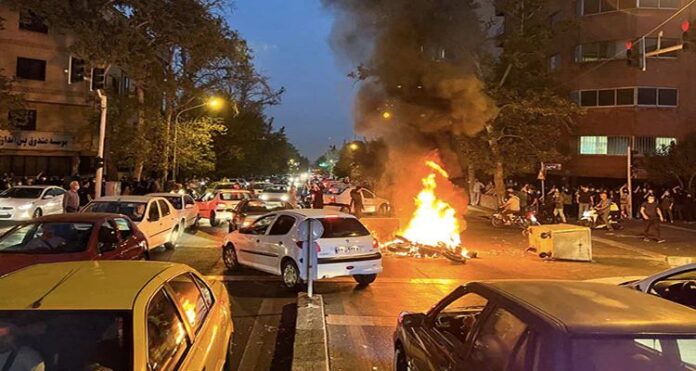| Translate This News In |
|---|
Amini was killed after being detained by the morality police for allegedly breaking the Islamic Republic’s severe clothing code for women, which sparked protests that have shaken Iran for nearly a month. The country’s Gen-Z youths — those born before 2010 — are of legal age and have been praised for their bravery while battling the security forces because they are fed up with the lack of progress. Young women and schoolgirls have been seen on the streets every night, raising their fists and yelling, “Woman, life, freedom” and “Death to the tyrant.”
However, the cost of youth participation in the protest movement has been high; according to the US-based human rights organization HRANA, at least 18 children have died, the youngest of whom was only 12 years old.
However, it’s widely accepted that the actual number of children slain is significantly greater.
At least 28 people had died, according to Iran’s Children’s Rights Protection Society this week, many of whom were from the underdeveloped province of Sistan-Baluchestan.
The Tehran-based organisation claimed that families were being “kept in the dark” on their children’s whereabouts and that their cases were proceeding without adequate legal assistance.
Some of the children who were detained, according to human rights attorney Hassan Raisi, were being housed in facilities for adult drug offenders.
It is illegal to hold anyone under the age of 18 with an adult criminal; this is a mandate, not a suggestion.
Nika Shakarami and Sarina Esmailzadeh, two 16-year-old girls whose deaths sparked an outpouring of sadness in Iran and across the globe, were among those slain in the protests.
“Antisocial personalities”
According to remarks made on Wednesday and published in the reformist Shargh newspaper in Iran, education minister Yousef Nouri, protesting children have also been detained away from the streets and inside of classrooms.
According to Nouri, those arrested were housed in “psychological centres.”
He stated that “correction and rehabilitation” was the goal in order to keep them from developing into “anti-social personalities.”
Despite the brutal crackdown and bans on smartphone apps like Instagram and TikTok, which are popular among Iranian teenagers, tech-savvy adolescents have nevertheless been able to distribute recordings of their rallies.
They have also changed their street strategy.
People who attend rallies dress in disguise by donning masks and caps, leaving their phones at home to avoid being followed, and packing extra clothing in case security personnel use paintballs to subsequently identify them to brand them.
On October 5, Ali Fadavi, the deputy commander of the Revolutionary Guards, told Iranian media that the average age of the detainees from many of the most recent rallies was 15.
Other officials have also expressed worry about video gaming.


















